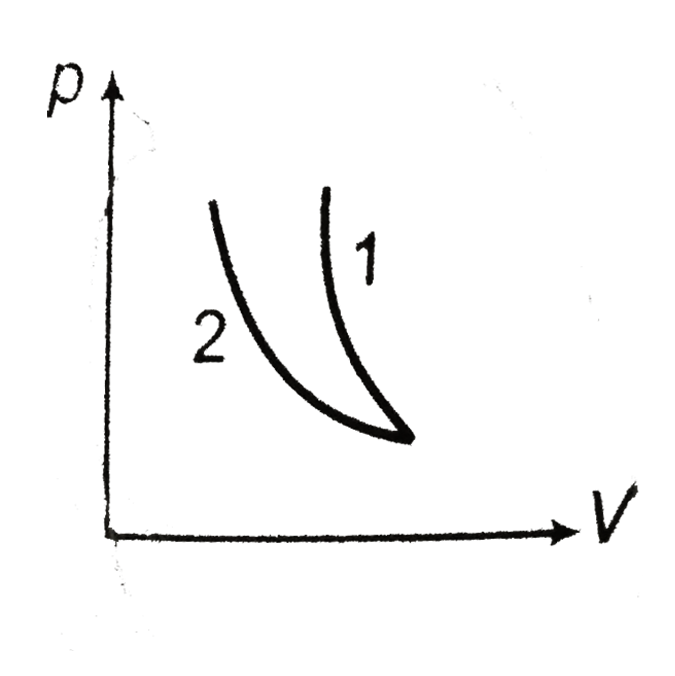A gas may expand adiabatically or Isother mally. If P, V graphs are drawn and if and are the slopes of the process then
a)
b) adiabatic curve and Isothermal curve may intersect
c)
both a and b are true
both b and c are true
both a and c are true
a, b, c are true
The correct Answer is:A
Similar Questions
A sphere S1 of radius r1 encloses a total charge Q. If there is another concentric sphere S2 of radius r2(>r1) and there be no additional charges between S1andS2 find the ratio of electric flux through S1andS2,
View SolutionStatement-1: Temperature of a system can be increased without supplying heat.
Statement-2: If the initial volume of system is equal to final volume in a process then work done is necessarily zero.
Statement-3: If an adiabatic curve for a gas intersect with an isothermal curve for the same gas then at the point of intersection, the ratio of slope of the adiabatic and the isothermal curve is γ.
View Solution
Knowledge Check
A gas may expand either adiabatically or isothermally. A number of p−V curves are drawn for the two processes over different ranges of pressure and volume, it will be found that
(i) Two adiabatic curves do not intersect
(ii) two isothermal curves do not intersect
(iii) an adiabatic curve and an isothermal curve may intersect.
(iv) the magnitude of the slope of an adiabatic curve is greater thanthe magnitude of the slope of an isothermal curveA(i),(ii)B(ii),(iii)C(iii),(iv)DallA gas may expand either abiabatically or isothermally .A number of P-V curves are drawn for the two processes over different ranges of pressure and volume . It will be found that :
AAn adiabatic curve and an isothermal curve may intersectBTwo adiabatic curves do not intersactCTwo isothermal curves do not intersectDAll of theseSTATEMENT-2: In a gas , any rapid change must be adiabatic, whereas a slow change may be adiabatic.
STATEMENT-2: In a p-V diagram, the magnitude of the slope is greater for an adiabatic process than for an isothermal process.AStatement-1 is True , Statement-2 is True, Statement-2 is a correct explanation for Statement-1.BStatement-1 is True , Statement-2 is True, Statement-2 is not a correct explanation for Statement-1.CStatement-1 is True , Statement-2 is False.DStatement-1 is False , Statement-2 is True.
A sphere S1 of radius r1 encloses a total charge Q. If there is another concentric sphere S2 of radius r2(>r1) and there be no additional charges between S1andS2 find the ration of electric flux through S1andS2,
View SolutionAssertion: Isothermal and adiabatic, two processes are shown on p-V diagram. Process-1 is aidabatic and process-2 is isothermal.
Reason: At a given point, slope of adiabatic process =γ×slope of isothermal process.

View SolutionIf the sum of n, 2n and infinite terms of G.P. are S1,S2 and S respectively, then prove that S1(S1−S)=S(S1−S2).
View SolutionStatement-1: Temperature of a system can be increased without supplying heat.
Statement-2: If the initial volume of system is equal to final volume in a process then work done is necessarily zero.
Statement-3: If an adiabatic curve for a gas intersect with an isothermal curve for the same gas then at the point of intersection, the ratio of slope of the adiabatic and the isothermal curve is γ.
View SolutionAssertion: Isothermal and adiabatic, two processes are shown on p-V diagram. Process-1 is aidabatic and process-2 is isothermal.
Reason: At a given point, slope of adiabatic process =γ×slope of isothermal process.

View Solution
